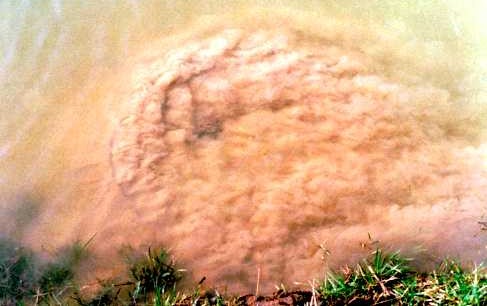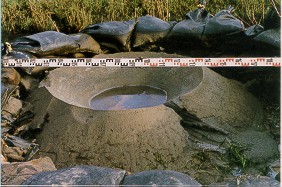7. Internal erosion (piping)#
T. Schweckendiek
There are many types of internal erosion which are relevant for dikes and earthen embankments in general. This chapter is restricted to the phenomenon backward erosion piping (also called under-seepage or just piping), as this is the relevant type for dikes with low-permeability dike bodies. For an overview of other types, typically relevant for sand dikes, refer to the International Levee handbook [].
Note for students: sections with required knowledge for the course CIE5314 Flood Defences are 7.1, 7.2, 7.3 and 7.4. The other sections provide additional information, and are still highly recommended to read. Note that sometimes the terms internal erosion and piping are used interchangably, which can cause confusion with the sub-mechanism also named piping (7.2.4–7.2.6).


Learning objectives#
After studying the stability chapter students are able to:
explain the basic the sub-mechanisms leading to piping failure and their interaction.
explain the different types of modelling and assessment, including their advantages and drawbacks (i.e. know which type is appropriate in which situation).
perform a basic piping analysis using analytical approaches for typical Dutch river dikes.
explain and choose between the most common design options to increase a dike’s resistance to backward erosion piping as well as common emergency measures in case of an imminent threat.
This chapter could also serve as a background and reference document for students and professionals that want to perform safety assessments and designs of dikes for internal erosion aspects. Additional guidance related to reliability-based design is also included in Ch:Safety_asses.
